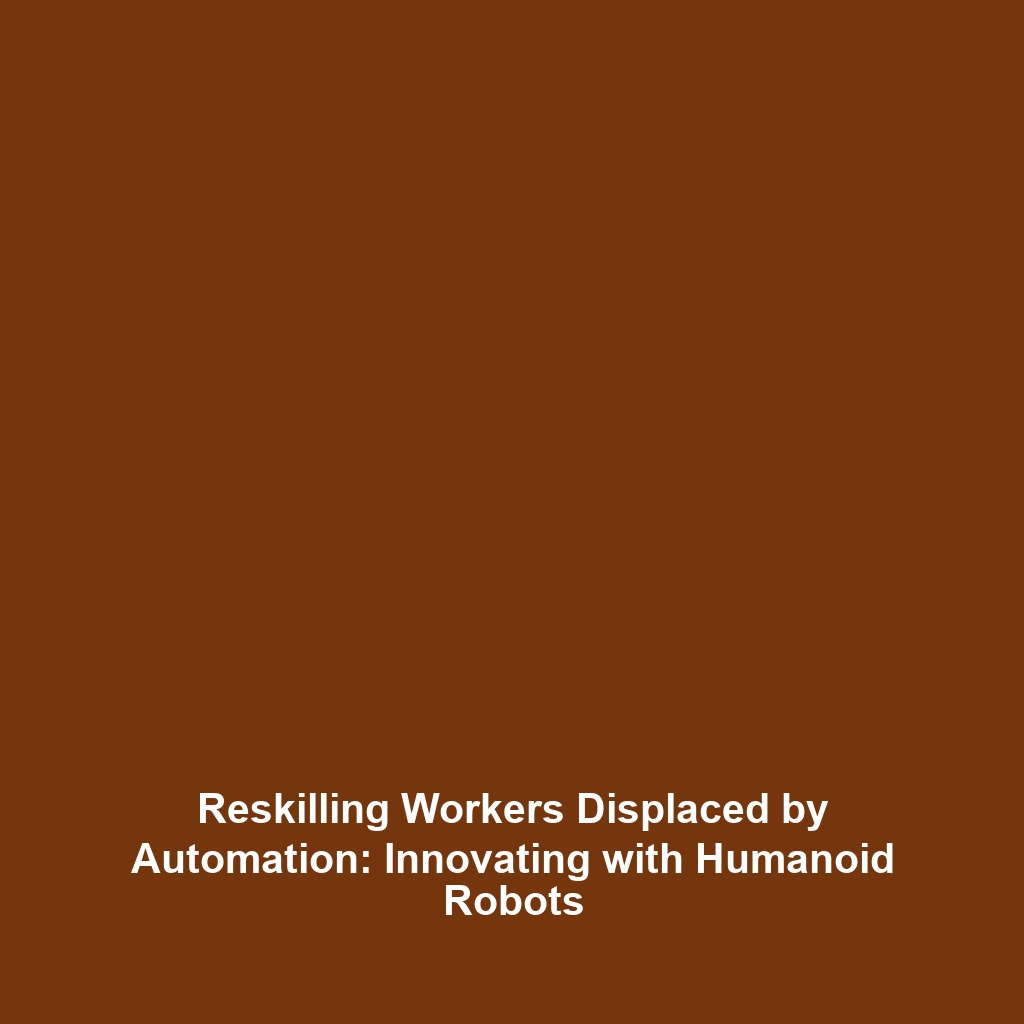Humanoids and Job Displacement: The Impact on the Workforce
Introduction
As humanoid robots become increasingly prevalent across various sectors, concerns about job displacement have intensified. This article explores the implications of humanoids on the workforce, highlighting the significance of understanding their impact within the broader context of technological advancement. With industries ranging from manufacturing to healthcare adopting humanoid robots, the discourse surrounding job loss versus job creation is crucial for shaping future labor markets. This discussion not only impacts employment trends but also drives policy and ethical considerations in robotics.
Key Concepts
Understanding the intersection of humanoids and job displacement requires familiarity with several key concepts:
- Humanoid Robots: These are robots designed to resemble the physical form and functionalities of humans, enabling interaction in human-centric environments.
- Job Displacement: Refers to the loss of jobs due to technological advancements, particularly through automation and robotics.
- Skills Gap: As humanoids take on more complex tasks, the workforce faces challenges in adapting to new skill requirements necessary for employment.
These concepts are critical when assessing the overall impact of humanoid robots on employment landscapes, invoking deeper analysis of both potential advantages and disadvantages within various industries.
Applications and Real-World Uses
Humanoid robots are being integrated into numerous fields, illustrating practical applications that directly relate to job displacement:
- Customer Service: Robots like SoftBank’s Pepper are revolutionizing customer interaction in retail, leading to shifts in traditional employment paradigms.
- Healthcare Assistance: Humanoids like the robotic nurse, Robear, are aiding healthcare professionals, enhancing patient care while raising questions about job roles.
- Manufacturing: Advanced humanoid robots are increasingly performing tasks that were predominantly handled by human workers, further pushing the discourse on job displacement.
These applications exemplify how humanoid robots are altering job functions in various sectors, prompting urgent discussions on employee retraining and job creation.
Current Challenges
The integration of humanoids into the workforce presents several challenges that warrant attention:
- Technical Limitations: While humanoids are adept at specific tasks, their overall efficiency and adaptability continue to be constrained.
- Economic Impact: The financial implications of integrating humanoids, including the cost of technology and potential unemployment, pose significant concerns.
- Societal Resistance: Fear over job loss and the ethical considerations surrounding autonomous robots contribute to public skepticism.
Addressing these challenges is crucial for a balanced approach to the integration of humanoid robots in the workforce.
Future Research and Innovations
Emerging innovations in robotic technology promise to transform the landscape of humanoid robots and workforce dynamics:
- Artificial Intelligence Advancements: Ongoing research in AI enhances humanoid robots’ capabilities, allowing for more complex decision-making processes.
- Collaborative Robots: The development of collaborative robots (cobots) aims to create environments where humanoids and humans work together, potentially alleviating some job displacement concerns.
- Policy and Ethics Research: Research into the ethical implications of job displacement and the creation of regulatory frameworks is increasing as humanoid use escalates.
These innovations pave the way for a future where humanoid robots coexist with human workers, ideally leading to augmented productivity rather than outright displacement.
Conclusion
Humanoids are poised to have a profound impact on job displacement within the workforce, presenting both opportunities and challenges. Understanding their implications is vital for navigating the balance between technological advancement and employment stability. Policymakers, educators, and industry leaders must work collaboratively to adapt to these changes. For further reading on the intersection of technology and workforce dynamics, explore our articles on automation and the future of work.

